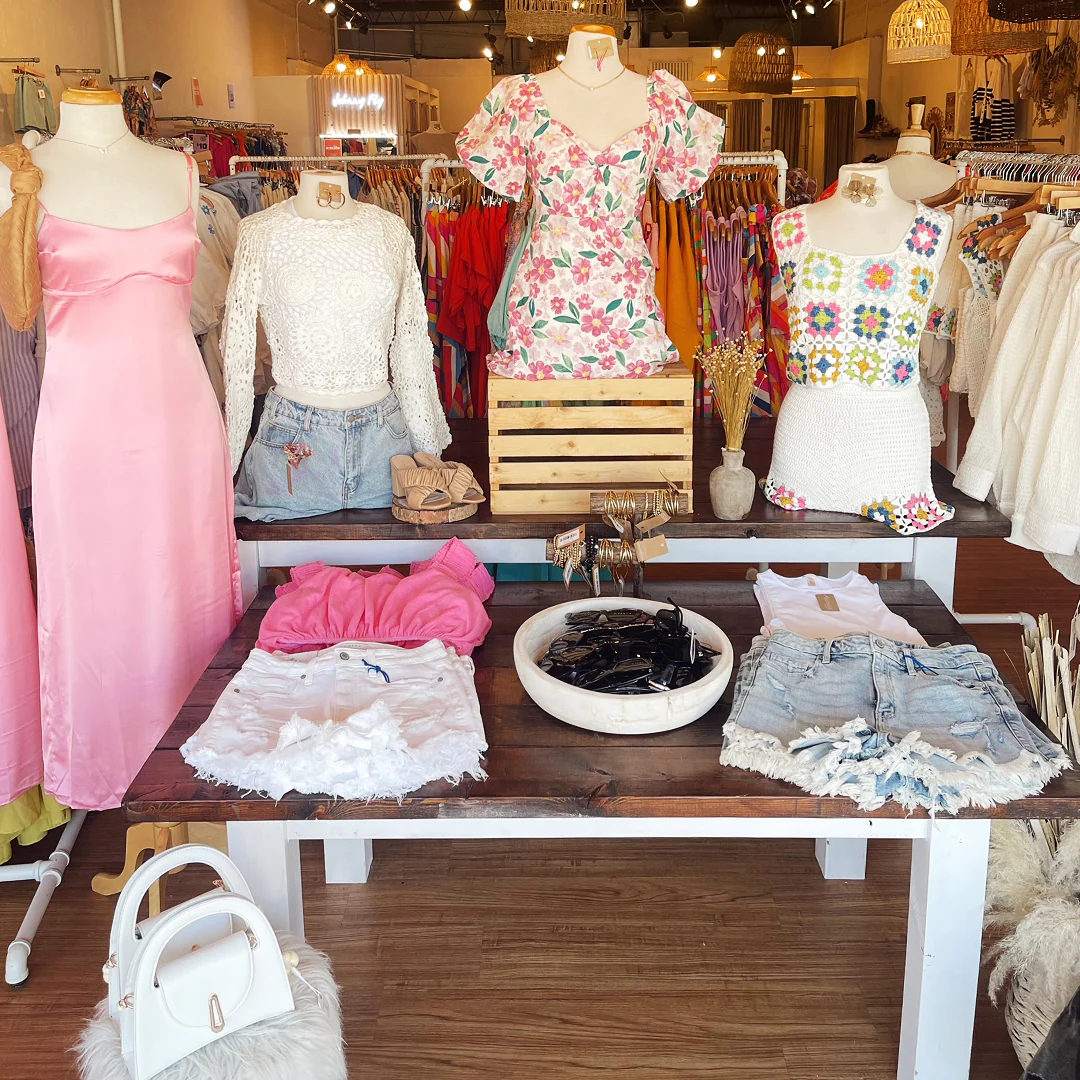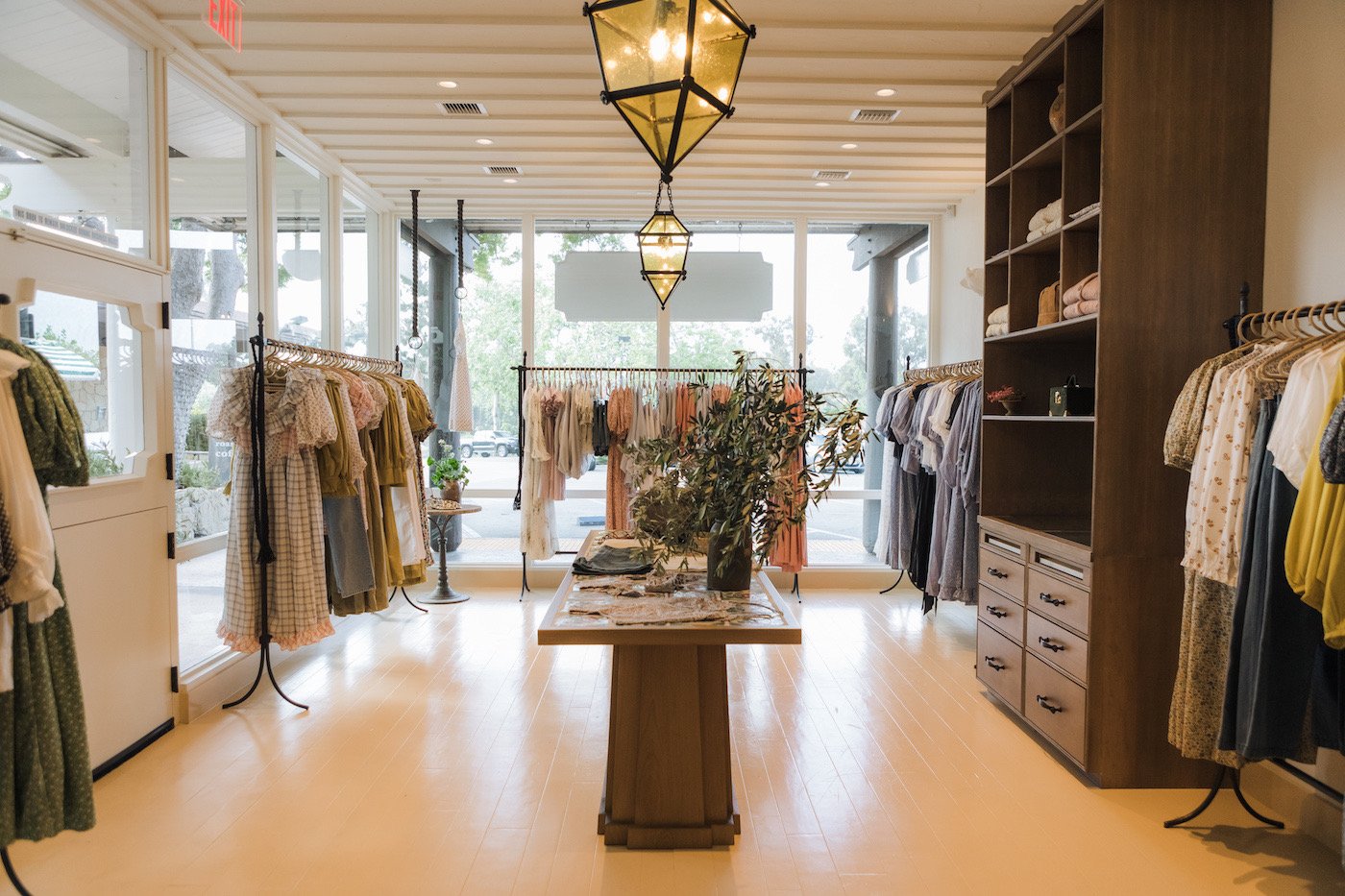Checking out the World of Sustainable Boutique Fashion Brands
Checking out the World of Sustainable Boutique Fashion Brands
Blog Article
Lasting Fashion: Just How Eco-Friendly Clothing Is Shaping the Future of Design
As the fashion industry faces increasing analysis over its ecological effect, the rise of lasting style provides a promising alternative that straightens style with ecological duty. boutique fashion. Exactly how does this motion genuinely affect the future trajectory of style, and what challenges exist in advance in its widespread fostering?
Ingenious Sustainable Products
As the style market grapples with its ecological influence, innovative lasting products have arised as a vital remedy for decreasing eco-friendly footprints. These materials not only minimize dependence on fossil fuels but likewise decrease hazardous pesticide use and water intake.
In enhancement to plant-based products, innovations in biofabrication have actually led to the development of lab-grown textiles. Mycelium natural leather, derived from mushroom roots, presents a functional and eco-friendly choice to pet leather. Its production causes substantially reduced carbon discharges and water usage, making it a more sustainable option for stylist looking for to align with eco-friendly practices.
Recycled products are likewise getting traction, with polyester made from recycled plastic bottles standing for a substantial development. This advancement not only diverts plastic waste from land fills and seas yet additionally minimizes energy consumption contrasted to creating virgin polyester. Together, these products highlight the potential for an extra sustainable apparel industry, leading the way for ecologically aware style and manufacturing.
Eco-Conscious Manufacturing
Building on the developments in sustainable materials, the apparel industry is also re-evaluating its manufacturing procedures to better reduce environmental impact. Secret strategies include reducing water usage, lowering carbon discharges, and removing unsafe chemicals. By taking on closed-loop systems, producers aim to reuse water and energy efficiently, dramatically decreasing waste. The combination of renewable energy sources, such as solar and wind power, into manufacturing centers additionally reduces dependence on fossil fuels.
An additional vital element is the decrease of harmful chemicals typically used in dyeing and ending up fabrics. Eco-conscious producers are moving in the direction of plant-based dyes and waterless dyeing modern technologies, which not only guard regional environments yet additionally improve employee safety and security. Developments like digital printing decrease fabric waste and energy usage, supplying a cleaner alternative to traditional methods.
With the innovation of blockchain technology, companies can now give comprehensive understandings right into their supply chains, making certain ethical and environmentally pleasant methods at each step. As the need for eco-conscious items grows, suppliers are urged to introduce, making sure that the future of style is both stylish and lasting.
The Increase of Upcycling
Upcycling, a transformative method in sustainable fashion, involves artistically repurposing thrown out products right into brand-new, high-grade products. This innovative approach not only minimizes waste however also diminishes the need for basic materials, therefore lessening the environmental influence of clothing manufacturing. By reconstructing and reimagining existing items, designers and style brands have the ability to instill creativity right into their collections while promoting environmental responsibility.

Moreover, the upcycling activity has actually equipped local business and independent developers, that commonly lead in technology due to their agility and creative thinking. By taking advantage of the plentiful availability of extra products, these entities add to a circular economic climate, showing that fashion can be both lasting and see this website stylish. With upcycling, the market takes substantial strides towards an extra responsible and conscious future.
Thrift Culture's Influence
The blossoming thrift culture substantially reshapes the landscape of lasting style, emphasizing the relevance of mindful intake. This social change motivates customers to accept secondhand apparel, therefore minimizing the need for new garment production and decreasing environmental influence. Second hand shopping not only expands the lifecycle of clothing yet additionally reduces the carbon footprint related to production, delivering, and getting rid of apparel.
A vital element of second hand society is its democratization of fashion. By using a large selection of styles from different eras at inexpensive rates, second hand shops make style available to a wider target market. This accessibility promotes a feeling of individuality and creative thinking, as customers mix and match special pieces to curate tailored wardrobes without adding to the fast style cycle.
Additionally, second hand culture promotes circularity in fashion, straightening with the principles of a round economic climate. As even more customers and designers embrace thrift society, the style sector is urged to adjust, incorporating sustainable methods to fulfill the growing need for eco-conscious options.

Future Trends in vogue
Style's advancement is progressively shaped by sustainability-driven initiatives and technological advancements. As consumers come to be a lot more eco conscious, the industry is responding with groundbreaking advancements that redefine the future of style. One famous pattern is the increase of digital style, where online garments can be used in enhanced fact atmospheres, substantially reducing material waste. This shift not just satisfies the digital-savvy customer but also minimizes the environmental impact commonly connected with garment production.
Furthermore, the integration of blockchain technology uses new opportunities in openness and traceability, allowing consumers to verify the sustainability credentials of their garments. boutique fashion. This makes sure responsibility in supply chains and promotes honest sourcing techniques. 3D printing is yet one more innovation that guarantees to change manufacturing procedures by enabling on-demand manufacturing, thereby reducing excess stock and waste
In addition, the development of bio-fabricated products, such as lab-grown natural leather and plant-based fabrics, offers sustainable options to traditional products. These innovations minimize dependence on pet products and resource-intensive crops. As these technologies grow, they are positioned to change the style landscape, merging style with sustainability. The future of fashion, therefore, lies in a smooth blend of technology, technology, and eco-friendly obligation.
Verdict
The improvement of the style market through lasting techniques indicates a crucial shift in the direction of ecological responsibility. This advancement not just aligns style with eco-friendly sustainability but likewise establishes a criterion for future fads focused on company website obligation and innovation.
As the style sector faces raising examination over its environmental effect, the surge of sustainable fashion provides an encouraging option that straightens style with ecological responsibility.As the style market grapples with its ecological impact, cutting-edge lasting materials have emerged as a critical remedy for decreasing eco-friendly footprints. Together, these materials highlight the potential for a much more sustainable fashion market, paving the way for ecologically aware style and production.
Structure on the technologies in sustainable products, the fashion sector is additionally re-evaluating its production processes to additionally minimize environmental impact. boutique fashion.Upcycling, a transformative technique in lasting fashion, involves creatively repurposing disposed of materials right into new, top quality items
Report this page